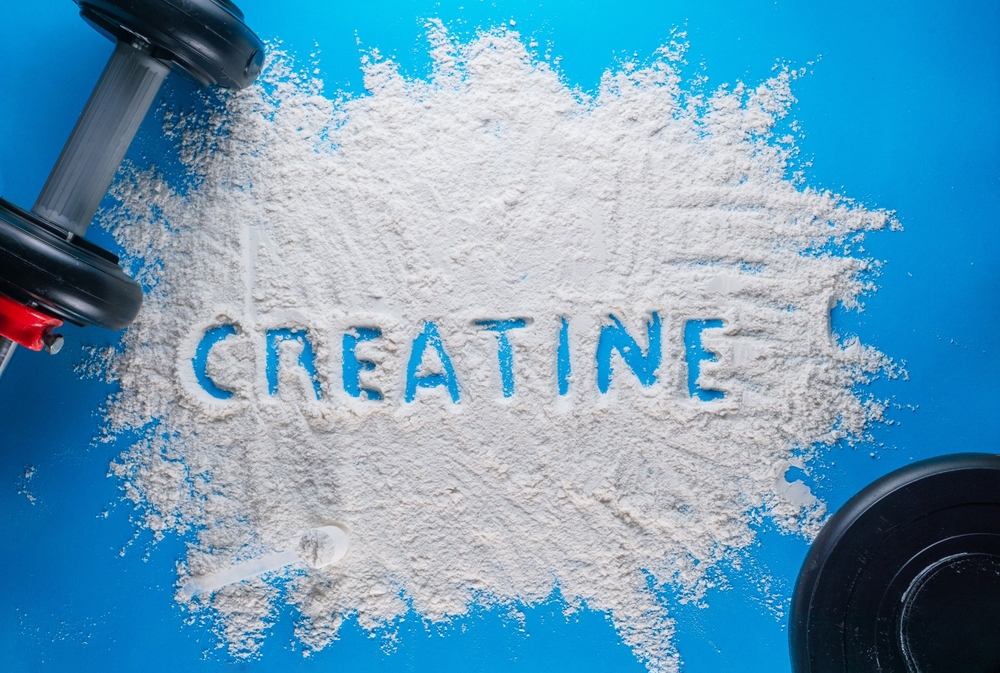THE SCIENCE BEHIND THIS POPULAR SUPPLEMENT
Creatine is a popular supplement among athletes and bodybuilders. It is often used to improve performance during high-intensity training. But how does it work? In this blog post, we will take a look at the science behind creatine and its potential benefits.
How Does Creatine Work?
Creatine is a substance that is naturally produced in the body. It is synthesised from three amino acids: glycine, arginine, and methionine. Once synthesised, creatine is stored in the muscles in the form of phosphocreatine. Phosphocreatine is used to produce ATP (adenosine triphosphate), which is the energy source for muscle contraction. During exercise, ATP is broken down to provide energy for muscle contraction. When ATP is broken down, it produces ADP (adenosine diphosphate). Phosphocreatine donates a phosphate group to ADP to regenerate ATP, which can then be used for energy. This process allows muscles to produce more ATP and contract for longer periods of time before becoming fatigued.
Creatine supplementation has been shown to increase muscle phosphocreatine levels, which can lead to increased ATP production and improved performance during high-intensity exercise. In one study, creatine supplementation was shown to improve performance during repeated bouts of maximal exercise (such as sprinting) by 5-15%. In another study, creatine supplementation was shown to improve power output during a single bout of maximal exercise (such as a weightlifting session) by 14%.
There are two main ways that people use creatine: loading and not loading. With loading, you take a large amount of creatine (usually 20 grams per day) for 5-7 days followed by a maintenance dose (2-5 grams per day). This method allows you to reach saturation levels more quickly but may also lead to more side effects such as bloating and diarrhoea. The not loading method involves taking a smaller maintenance dose (2-5 grams per day) from the start. This method takes longer to reach saturation but may be less likely to cause side effects.
Do You Need To Consume Carbs With Creatine?
No, you do not need to consume carbs with creatine. However, consuming carbs with creatine may help improve absorption. In one study, consuming carbs with creatine increased muscle creatine levels by 60% compared to taking creatine alone.
Do You Need To Come Off Creatine?
No, you do not need to come off creatine unless you are no longer training or no longer want to take it for some other reason. Your body will naturally produce less creatine when you stop taking it because your muscles will have less need for ATP production without exercise. However, there is no evidence that coming off creatine leads to any negative side effects.
Is Creatine Safe?
Yes, creatine is safe when taken at recommended doses (up to 25 grams per day). Creatine has been extensively studied and there are no reports of long-term adverse effects from supplementation in healthy adults. In fact, there are many studies that have looked into the safety and effectiveness of creatine supplementation in different populations including children, adolescents, elderly adults, vegetarians, vegans, and people with various medical conditions such as heart disease and kidney disease.
What Other Uses Might It Be Good For?
Outside of high intensity training?Creatine has also been studied for its potential uses outside of high intensity training including cognitive function, brain injury recovery , Parkinson’s disease , Huntington’s disease , depression , anxiety , ageing , and diabetes . Although more research is needed in these areas, initial studies have shown promising results. For example, one study showed that short-term creatine supplementation improved cognitive function in elderly adults aged 60-85 years old . Another study showed that 3 months of daily creatine supplementation improved symptoms of depression compared to placebo .
Creatine is a popular supplement among athletes and bodybuilders because it has been shown to improve performance during high-intensity exercise . The science behind how it works lies in its ability to increase phosphocreatine levels in muscles , which leads to increased ATP production and improved performance . Although it is safe when taken at recommended doses , more research is needed on its potential uses outside of high intensity training . If you are considering taking creatine , speak with your doctor or qualified health professional first .
An In-Depth Look at Creatine Monohydrate and Its Benefits
Creatine Monohydrate is a widely used supplement among athletes, bodybuilders, and fitness enthusiasts, known for its potential to improve performance during high-intensity training. Let’s take an in-depth look at creatine, its mechanism of action, and its benefits.
Creatine is an organic acid found in skeletal muscles, and it is synthesised in the human body from the amino acids arginine, glycine, and methionine. It can also be obtained from dietary sources such as wild game, red meat, and fish. Creatine Monohydrate is the most popular form of supplemental creatine due to its effectiveness and safety.
The primary function of creatine in the body is to increase the synthesis of Adenosine Triphosphate (ATP), which serves as the primary energy source for muscle contractions during anaerobic exercise. By providing more ATP, creatine allows muscles to contract with greater power for more repetitions, thereby increasing anaerobic exercise capacity. This enhanced capacity can lead to increased muscle strength and size.
To ensure optimal benefits from creatine supplementation, it is generally recommended to consume 5-10 grams of Creatine Monohydrate per day. This dosage is adequate for most individuals, regardless of their size or muscle mass. To maximise creatine absorption, it should be taken with carbohydrates, typically during or after a workout. There are two common approaches to creatine supplementation: a loading phase followed by a maintenance phase or a consistent daily dose without loading. Both methods lead to similar results after four weeks.
It’s important to note that creatine does not cause bloating, as some people may believe. While creatine does lead to fluid retention, this occurs both intracellularly (inside the cells) and extracellularly (outside the cells), without causing noticeable bloating.
Beyond its well-known benefits for high-intensity exercise, creatine has been studied for potential applications in various other areas, such as cognitive function, brain injury recovery, Parkinson’s disease, Huntington’s disease, depression, anxiety, ageing, and diabetes management. While more research is needed to establish its effectiveness in these areas, initial findings have shown promising results.
Creatine Monohydrate is a powerful supplement that can enhance high-intensity training performance, contribute to muscle growth, and may offer additional health benefits.
We have a qualified Nutritionist on the team to help you with your nutrition and training goals Contact Us today!

